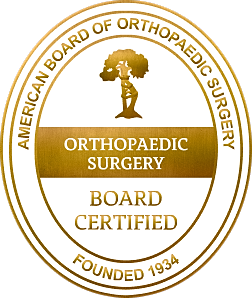
















This is referred to as the cervical area of the spine.
Cervical Radiculopathy - This condition occurs when a nerve root in the cervical spine becomes compressed or irritated.
Disc Herniation - This is the protrusion or rupture of a cervical disc.
Spondylosis - This condition involves the degeneration of the cervical spine's discs, joints, and ligaments.
Spinal Stenosis - Occurs when the spinal canal in the cervical spine narrows, putting pressure on the spinal cord and nerves.
Cervical Fractures - These are breaks or cracks in the bones of the cervical spine, often resulting from traumatic injuries.
Cervical Radiculopathy - The compression or irritation of nerve roots in the cervical spine (neck region). This can cause pain, numbness, tingling, and weakness that radiates through the shoulder, down the arms, and into the hands.
Herniated Disc - When a disc in the cervical spine ruptures or bulges, it can put pressure on nearby nerves, leading to shoulder pain, numbness, and weakness.
Scoliosis - Severe cases of scoliosis, an abnormal curvature of the spine, can cause spinal imbalances and postural changes. These imbalances can affect the alignment of the shoulders, resulting in shoulder pain and discomfort.
Osteoarthritis - Osteoarthritis in the cervical spine can cause degeneration and inflammation of the facet joints, leading to neck and shoulder pain. The shoulder may experience referred pain from the affected cervical joints.
This is referred to as the thoracic region of the spine.
Herniated Disc - This is the protrusion or rupture of a thoracic disc.
Spondylosis - This condition involves the degeneration of the thoracic spine's discs, joints, and ligaments.
Spinal Stenosis - Occurs when the spinal canal in the thoracic spine narrows, putting pressure on the spinal cord and nerves.
Disc Degeneration - The gradual deterioration of the discs in the thoracic spine.
This is referred to as the Lumbar area of the spine.
Herniated Disc - This occurs when a disc in the lumbar spine ruptures or bulges, putting pressure on nearby nerves.
Spinal Stenosis - Occurs when the spinal canal in the lumbar spine narrows, putting pressure on the spinal cord and nerves.
Sciatica - Occurs when the nerve roots in the lower back (lumbar spine) become compressed or irritated. It can cause pain, numbness, tingling, and weakness that radiates down the leg.
Degenerative Disc Disease - The gradual deterioration of the discs in the lumbar spine.
Sciatica - Occurs when the nerve roots in the lower back (lumbar spine) become compressed or irritated. It can cause pain, numbness, tingling, and weakness that radiates down the leg and into the foot.
Herniated Disc - When a disc in the lumbar spine ruptures or bulges, it can put pressure on the nearby nerves, leading to foot pain, numbness, and tingling.
Spinal Stenosis - This condition involves the narrowing of the spinal canal in the lower back, which can compress the spinal cord and nerve roots. It can cause symptoms such as foot pain, weakness, and difficulty walking or balancing.
Degenerative Disc Disease - Over time, the discs in the lower back can degenerate, leading to reduced disc height and potential nerve compression. This can produce symptoms that extend into the feet.
Sciatica - Occurs when the nerve roots in the lower back (lumbar spine). become compressed or irritated. It can cause pain, numbness, tingling, and weakness that radiates down the leg.
Herniated Disc - When a disc in the lumbar spine ruptures or bulges, it can put pressure on the nearby nerves, leading to leg pain, numbness, and weakness.
Spinal Stenosis - This condition involves the narrowing of the spinal canal in the lower back, which can compress the spinal cord and nerve roots. It can cause symptoms such as lower back pain, buttock pain, leg pain, numbness, and weakness.
Degenerative Disc Disease - Over time, the discs in the lower back can degenerate, leading to reduced disc height and potential nerve compression. This can result in leg pain, tingling, and weakness.
Cervical Radiculopathy - The compression or irritation of nerve roots in the cervical spine (neck region). This can cause pain, numbness, tingling, and weakness that radiates down the arms and into the hands.
Herniated Disc - When a disc in the cervical spine ruptures or bulges, it can put pressure on nearby nerves, leading to arm pain, numbness, and weakness.
Spinal Stenosis - Occurs when the spinal canal in the cervical spine narrows, putting pressure on the spinal cord and nerves, leading to arm pain, numbness, and weakness.
Osteoarthritis - It is the degeneration of the cervical spine joints, commonly associated with aging. This condition can lead to the development of bone spurs, which may impinge on nerves and cause arm pain and other symptoms.
We believe in the idea that when our patients learn more about their health, they can make better decisions. That's why we work hard to give you clear and concise information about what's going on so you can make the best choices about your care.
Our dedicated team will help you understand your diagnosis. We'll talk about the possible treatments that could work for you. We're always here to answer any questions or clear up any worries you might have. We believe good communication is key to helping you on your health journey.